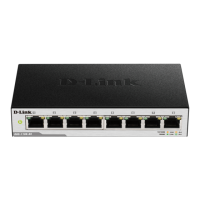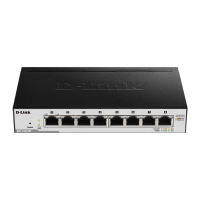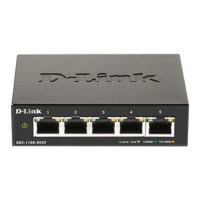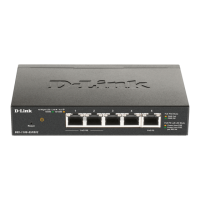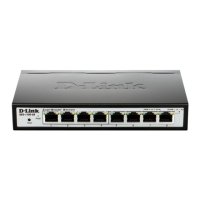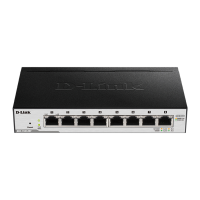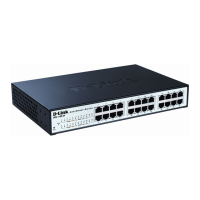5 Configuration D-Link DGS-1100-06/ME User Manual
Figure 5.51 – Configuration > IGMP Snooping > IGMP Snooping-Router Port Settings
To view the Multicast Entry Table for a given VLAN, press the View button.
Figure 5.52– Configuration > IGMP Snooping > IGMP Snooping-Multicast Entry Table
Configuration > IGMP Snooping > IGMP Access Control Settings
The IGMP Access Control Settings page allows user to enable or disable the IGMP access control of ports.
Click Apply to implement changes made.
Figure 5.53 - Configuration > IGMP Snooping > IGMP Access Control Settings
Configuration > IGMP Snooping > ISM VLAN Settings
In a switching environment, multiple VLANs may exist. Every time a multicast query passes through the
Switch, the switch must forward separate different copies of the data to each VLAN on the system, which, in
turn, increases data traffic and may clog up the traffic path. To lighten the traffic load, multicast VLANs may
be incorporated. These multicast VLANs will allow the Switch to forward this multicast traffic as one copy to
recipients of the multicast VLAN, instead of multiple copies.
Regardless of other normal VLANs that are incorporated on the Switch, users may add any ports to the
multicast VLAN where they wish multicast traffic to be sent. Users are to set up a source port, where the
multicast traffic is entering the switch, and then set the ports where the incoming multicast traffic is to be sent.
The source port cannot be a recipient port and if configured to do so, will cause error messages to be
produced by the switch. Once properly configured, the stream of multicast data will be relayed to the receiver
ports in a much more timely and reliable fashion.
The ISM VLAN Settings page allows the user to configure the ISM VLAN.
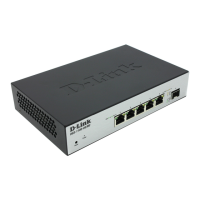
